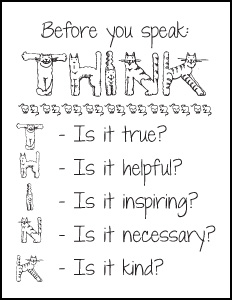ISTE 5: Technology Operations and Concepts
Question: How can students become digital citizenship leaders as they begin to create habits in digital academic learning that will carry on into the future?
When students enter the work force, chances are pretty high that they will be using the internet to collaborate, inspire, inform, and create. They will be collaborating through communication with people they see in the office and people across the globe with different time zones and cultures. They will be searching for inspiration on the internet to make their work better and more interesting. They will be informing themselves through the knowledge found on the internet by researching on their own. (These days, many people get hired to do jobs they are underqualified for and have to research how to do their job on their own!) People in the work force are using everything that has inspired and informed them on the internet, and they put it together to create something new to share. Students need to start habits now that will prepare them for this kind of relationship with the internet that is ethical and legal.
The school where I intern already uses http://turnitin.com/ as a way to track student’s originality in their writing assignments. I would like to expand on this platform by treating it less like a way to “catch” kids cheating, and more as an opportunity to observe originality of student work. I would like them to develop skills in summarizing and paraphrasing by looking at the percentage of similarity. An experimental activity would be if a whole class is given a paragraph to paraphrase, or a longer essay to summarize, and they all submit it to turnitin.com and see how the percentages come out. This activity would be an interesting exercise into the summarizing/paraphrasing skill. That activity could launch students into examining the art of originality in summarizing longer texts.
When teaching students about digital citizenship and citations, I would like to appeal to student’s ethics and values when discussing citations and copywriting. This article http://www.edutopia.org/blog/ccia-teaching-online-ethics-heather-wolpert-gawron shares a webquest that starts off defining “ethics”, which is essential idea when addressing conduct online. The words “justice” and “etiquette” could also be defined. With the definitions students can predict, at the start of the webquest, how these words could apply to digital citizenship.
The second step is a “netiquette” quiz on http://www.learnthenet.com/how-to/get-started/. I couldn’t find the quiz, but the site offers tips to various online topics such as writing an e-mail, social networking, doing business online, and researching online. It’s important that kids know, when learning “netiquette”, that what is written to people online should always be double checked with the audience in mind.

This acronym can be applied to communication on the internet.
Students then look at https://creativecommons.org/about/ and learn about Creative Commons. This site has a great short video that provides an overview of copywriting and what Creative Commons does. If students think about how they want their own work to be protected, either now or in the future, they are more likely to respect other people’s restrictions on how their work is to be shared and used. After student’s learn what Creative Commons is, they can explore finding images on http://www.photosforclass.com/, which searches for Creative Commons photos and provide citations for each photo.
Students transition to exploring sites using a Google Advanced search to find resources that are fair use, and then suggest that site to another student. Speaking of Googling, here is a fabulous infographic that provides tips on how to search on google most effectively http://www.dailyinfographic.com/get-more-out-of-google-infographic.
The last two steps of this webquest asks students to watch a video and read about fair use and copywrite laws. Although relatively dry, the information is necessary for students to understand what they are dealing with when handling other people’s work online. After students go over all the information, they sign a classroom contract. This contract states that, for the rest of the year, they will conduct themselves ethically and responsibility on the internet, citing each source appropriately for every project for the rest of the year. This establishes high expectations. As a teacher, it is important to know that students realize the implications and you can hold them accountable to the expectations. By holding them accountable to these expectations in class, students will create online habits that will serve them throughout their lives.
Works Cited
Aisling. (2014, February 16). Get More Out of Google. Retrieved from Daily Infographic: http://www.dailyinfographic.com/get-more-out-of-google-infographic
Brown, S. (2013, April 15). Before You Speak: THINK. Retrieved from Homeschool With Love: http://www.homeschoolwithlove.com/2013/04/15/before-you-speak-think-free-printables/
Creative Commons . (n.d.). Retrieved from Creative Commons : https://creativecommons.org/about/
Learn The Net. (2015). Retrieved from Learn the Net .
Photos for Class. (2016). Retrieved from Photos for Class : http://www.photosforclass.com/
turnitin. (2015). Turnitin.com . Retrieved from Turnitin.com: http://turnitin.com/
Wolpert-Gawron, H. (2014, February 18). Common Core in Action: Teaching Online Ethics . Retrieved from Edutopia : http://www.edutopia.org/blog/ccia-teaching-online-ethics-heather-wolpert-gawron
